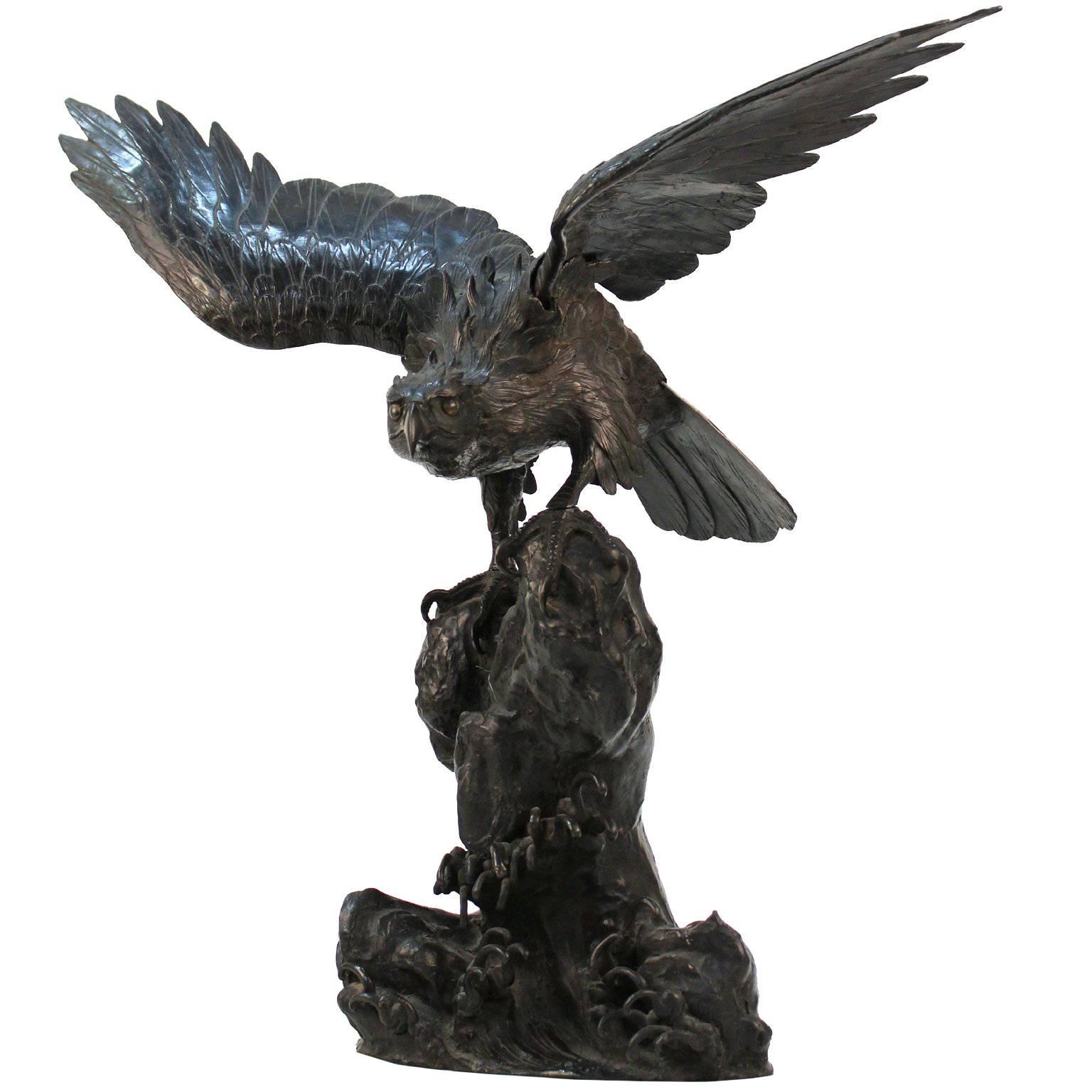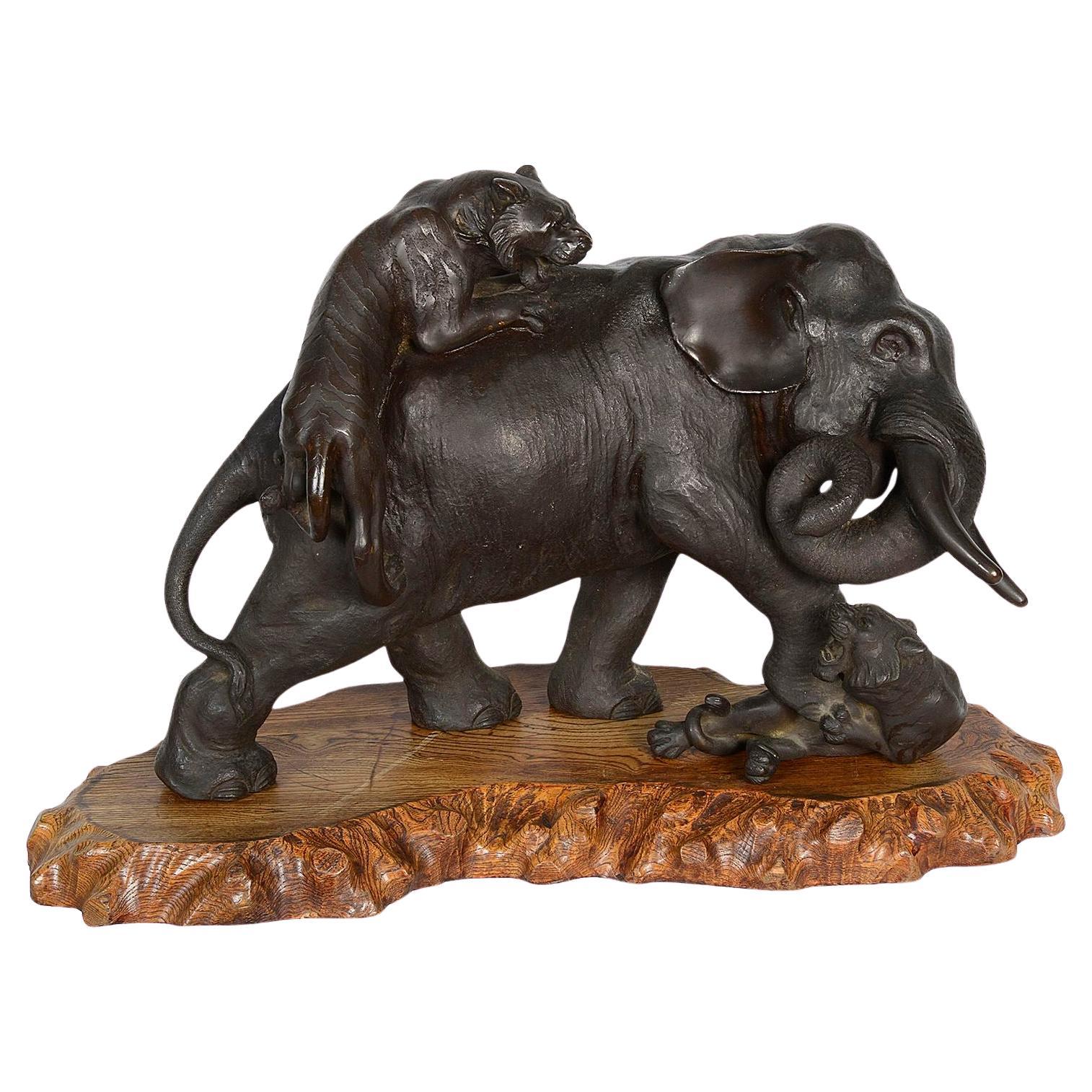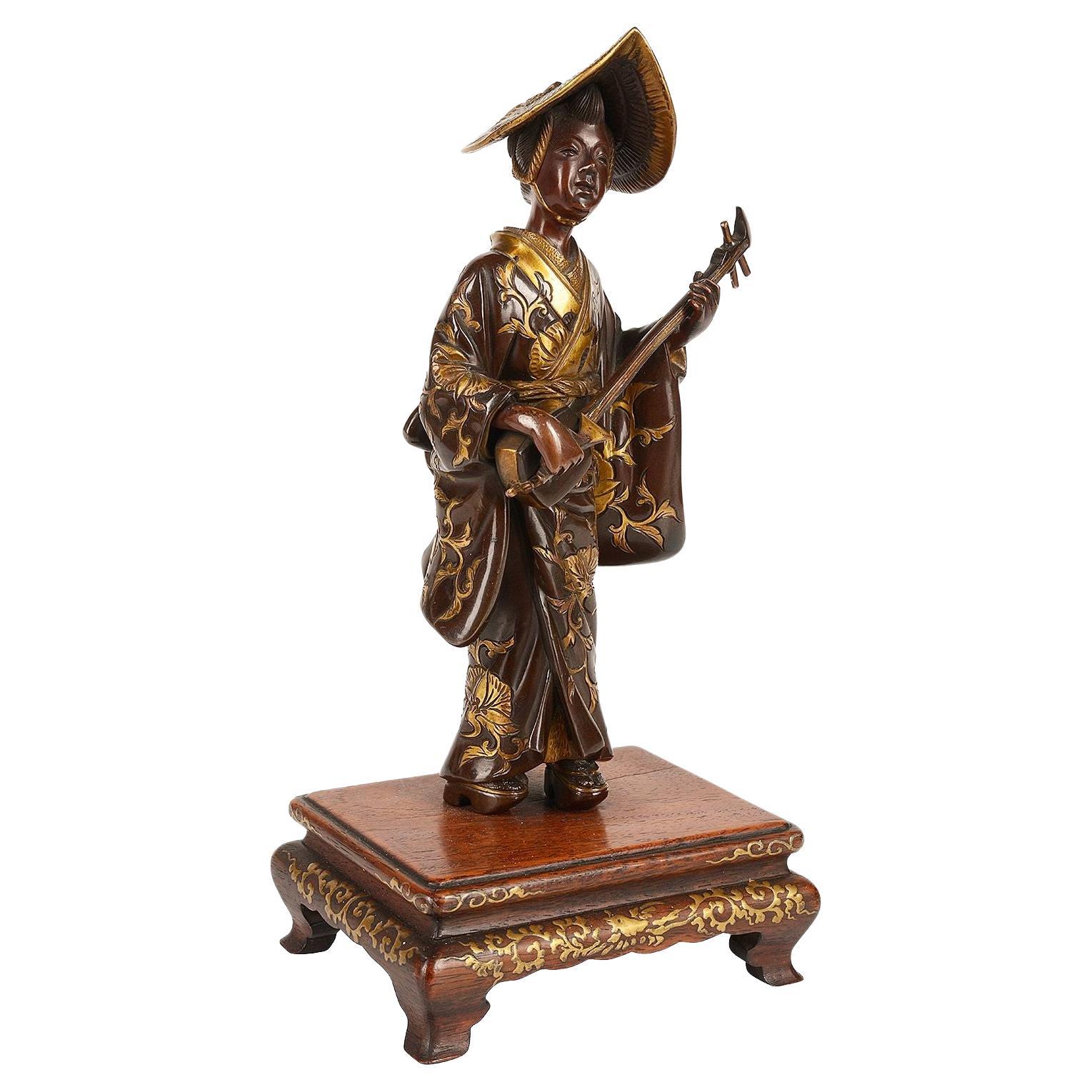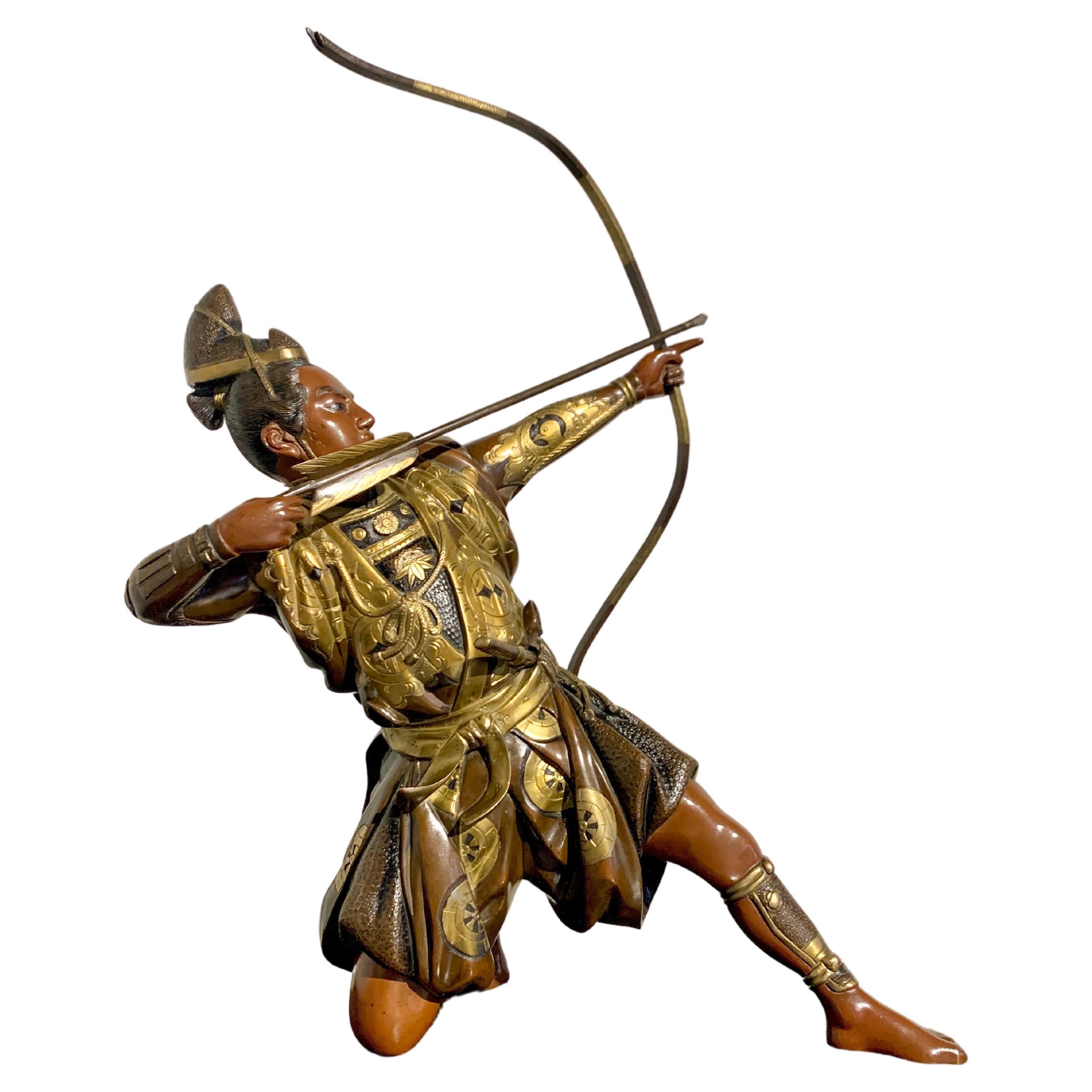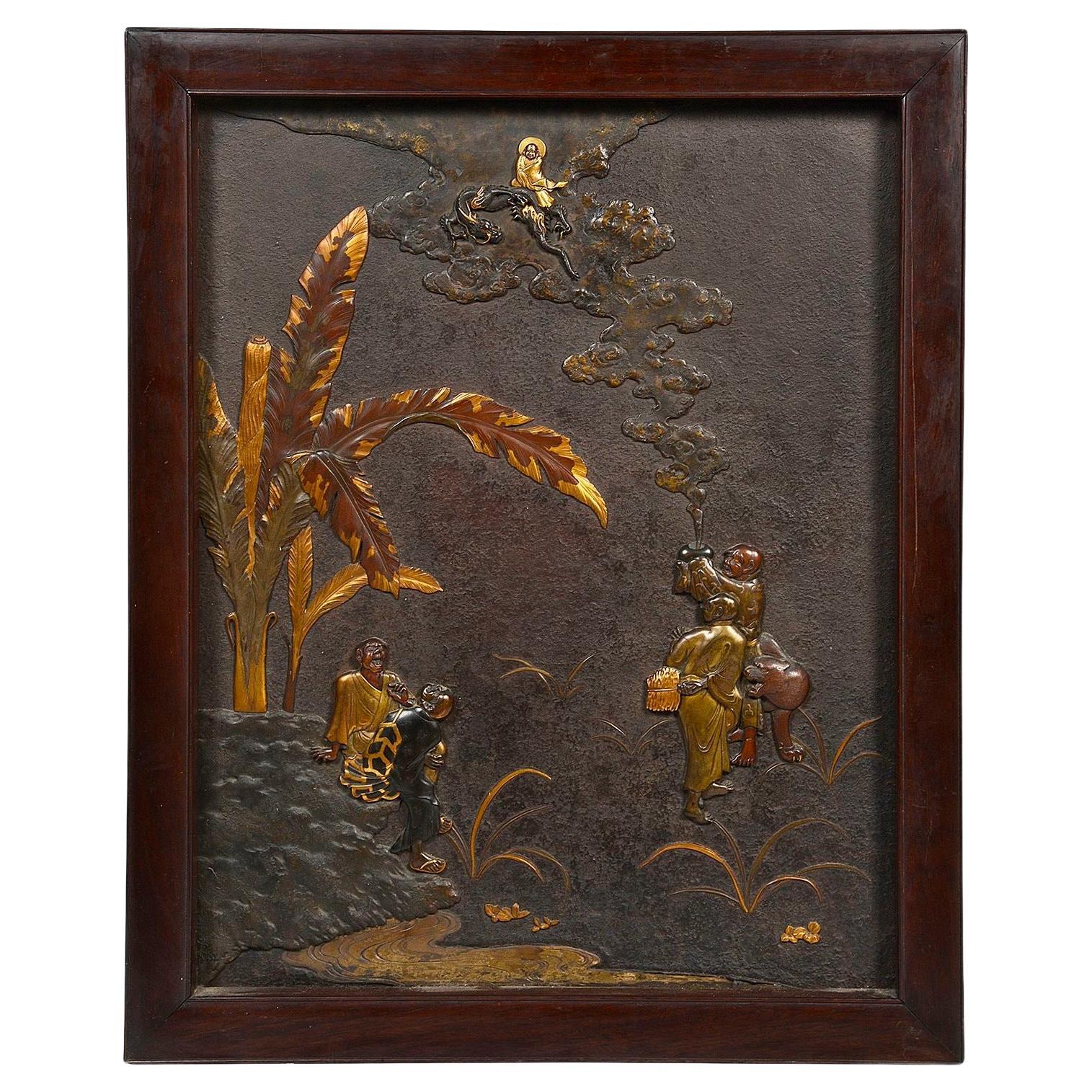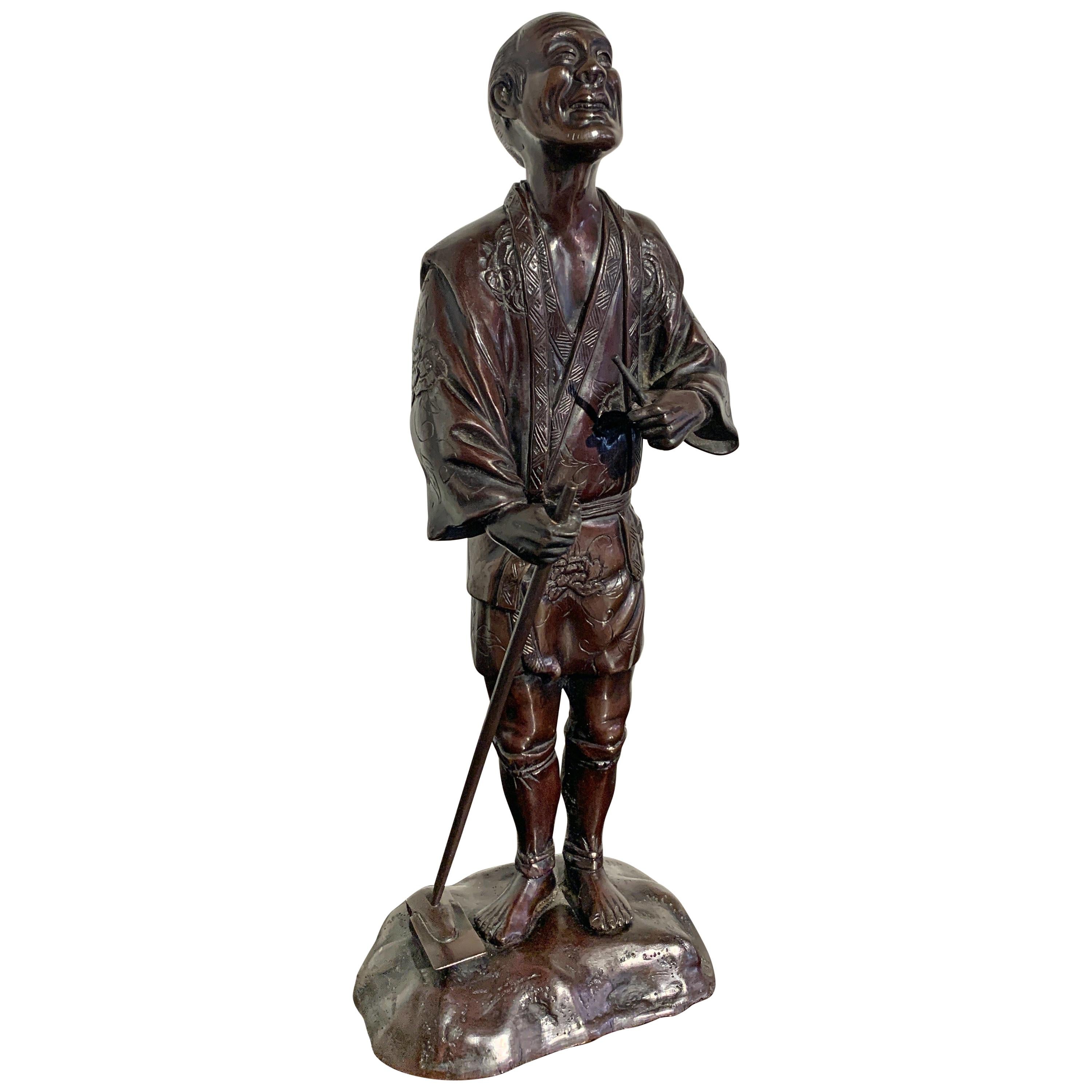Items Similar to Japanese Meiji period bronze Hawk, circa 1890
Want more images or videos?
Request additional images or videos from the seller
1 of 9
Japanese Meiji period bronze Hawk, circa 1890
About the Item
A fine quality late 19th Century Meiji period Japanese patinated Bronze study of a Hawk, having gilded highlights such as the claw feet and face.
Mounted on a carved hardwood root base.
Batch74 62265 SNKZZ
- Dimensions:Height: 17.72 in (45 cm)Width: 15.75 in (40 cm)Depth: 13.78 in (35 cm)
- Materials and Techniques:Bronze,Patinated
- Place of Origin:
- Period:
- Date of Manufacture:1890
- Condition:Wear consistent with age and use.
- Seller Location:Brighton, GB
- Reference Number:
About the Seller
5.0
Platinum Seller
These expertly vetted sellers are 1stDibs' most experienced sellers and are rated highest by our customers.
1stDibs seller since 2015
436 sales on 1stDibs
Typical response time: 1 hour
Associations
LAPADA - The Association of Arts & Antiques Dealers
- ShippingRetrieving quote...Ships From: Brighton, United Kingdom
- Return PolicyA return for this item may be initiated within 14 days of delivery.
More From This SellerView All
- Japanese Meiji period bronze Elephant fighting two Lions.Located in Brighton, SussexA fine quality Dramatic late 19th Century Japanese Meiji period (1868-1912) patinated bronze Elephant being attacked by two Lions, set on a carved wooden base, signed to the undersid...Category
Antique Late 19th Century Japanese Sculptures and Carvings
MaterialsBronze
- Japanese Meiji Period, Miyao Bronze Statue of a MusicianBy Eisuke Miyao 1Located in Brighton, SussexA fine quality Meiji period (1868-1912) Miyao bronze statue of a female muscian, having wonderful gilded high lights and mounted on a hardwood stand. Sign...Category
Antique 19th Century Japanese Sculptures and Carvings
MaterialsBronze
- Meiji period bronze plaque.Located in Brighton, SussexA fine quality late 19th Century (Meiji period 1868-1912) patinated and gilded bronze plaque depicting four men looking into the sky, two under a Palm tree, the other two standing next to a Tiger and holding a smoking vessel...Category
Antique Late 19th Century Japanese Sculptures and Carvings
MaterialsBronze
- Large Japanese Meiji period Bronze Lion 34" (87cm) wideLocated in Brighton, SussexA very impressive 19th century Japanese Meiji period (1868-1912) bronze lion on a rock. Signed.Category
Antique 1880s Japanese Sculptures and Carvings
MaterialsBronze
- Japanese Silvered Bronze Model of a Goshawk, circa 1890By Toyohara KunichikaLocated in Brighton, SussexA SILVERED-BRONZE MODEL OF A GOSHAWK By Kunichika, Meiji era (1868-1912), late 19th/early 20th century Naturalistically rendered, standing alert with its head lowered, its wings ...Category
Antique Late 19th Century Japanese Sculptures and Carvings
MaterialsBronze, Silver Leaf
- Japanese Meiji Period Bronze Farm Girl, 1890Located in Brighton, SussexA very good quality late 19th Century (Meiji period 1868-1912) Japanese bronze statue of a farm girl holding a Hoe and wearing a wide brimmed w...Category
Antique 19th Century Japanese Figurative Sculptures
MaterialsBronze
You May Also Like
- Japanese Meiji Bronze Sea-Hawk SculptureLocated in New York, NYA finely-cast large Japanese Meiji-period bronze sculpture of a sea-hawk with stretched-out wings, made in the 1880s. The eyes are gilded; both wings and the body of the hawk are det...Category
Antique 1880s Japanese Meiji Sculptures and Carvings
MaterialsBronze
- Japanese Miyao Style Gilt Bronze Samurai Archer, Meiji Period, JapanBy Eisuke Miyao 1Located in Austin, TXA spectacular Japanese cast, carved, and parcel gilt bronze sculpture, okimono, of a kneeling samurai archer, signed Kiyotsugu (died 1894), Meiji ...Category
Antique Late 19th Century Japanese Meiji Sculptures and Carvings
MaterialsBronze
- Japanese Tokyo School Bronze Okimono of a Farmer, Meiji PeriodLocated in Austin, TXA very fine and detailed Tokyo School cast bronze okimono (decorative sculpture) of a smiling farmer, Meiji period, late 19th century, Japan. The e...Category
Antique Late 19th Century Japanese Meiji Sculptures and Carvings
MaterialsBronze
- Japanese Meiji Period Bronze Elephant Sculpture on Burlwood BaseLocated in New York, NYA Japanese Meiji period bronze elephant sculpture on its original burl-wood base. Old repair to the tail; some paint chips to bronze trunk; unsigned.Category
Antique 1880s Japanese Meiji Animal Sculptures
MaterialsBronze
- Japanese Theatre Mitsumekozo Theatre Mask Meiji Period, circa 1900Located in Prahran, VictoriaUnusual Japanese Folk Art theatre mask depicting the playful character Mitsumekozo, a three eyed goblin often portrayed as a mischevious creature in comical plays, late Meiji period,...Category
Antique Late 19th Century Japanese Meiji Sculptures and Carvings
MaterialsWood
- Japan 1890 Meiji Period Signed Assembling of Okimono with a Group of SkeletonsLocated in Miami, FLA signed Okimono from the Japanese Meiji period (1868-1912). Very rare, unusual and large sculptural assembling of a dysplaying piece of okimono. Created in Japan during the imperial period of the Meiji (1868-1912). This extraordinary piece okimono sculpture depict a group of four intricately and realistically rendered carousing males skeletons representations (Gaikotsu) standing in several position. One skeleton is crouched down playing with mouses in the floor. The second is seated resting in the other's back, peacefully smoking opium. The others two are fully standing in interacting position. The entire composition is arranged freely displayed on the wood base including a woven basket, apparently with food and four playfull mouses. There are an extra five mouses in different positions, freely playing around, all of them with the eyes accented with carved black ebony. The composition is displayed on a four-legged free form carved wood platform with an inlaid red plaque engraved with the artist's signature. The level of detail and the quality of the carving is truly exceptional. Has an exact measurements of 216.15 mm by 139.7 mm by 359.41 mm (8.51 x 5.5 x 14.15 Inches). After an extensive collection of data, comparables and references to this piece, we have only been able to find only three okimono sculptures like this, with similar themes and the same quality of work. References Note: A similar carving of four skeletons playing an animated game of dominos, signed Shutaro in an inlaid rectangular red plaque, was sold in London by Christie’s South Kensington in October 14 2014, Lot 120 Sale 5546. References Note: A similar carving with four skeletons in an otherwise typical victorian scene of a photographer and three sitters signed Shutaro in an inlaid rectangular red plaque, was sold in Edinburgh at Lyon & Turnbull in November 7, 2018. References Note: A similar carving with five skeletons seated, playing cards and drinking, was sold in London by John Nicholson Fine Art on September 26, 2018. Meiji period, is an era of Japanese history that extended from October 23, 1868 to July 30, 1912.The Meiji era was the first half of the Empire of Japan, when the Japanese people moved from being an isolated feudal society at risk of colonization by Western powers to the new paradigm of a modern, industrialized nation state and emergent great power, influenced by Western scientific, technological, philosophical, political, legal, and aesthetic ideas. As a result of such wholesale adoption of radically different ideas, the changes to Japan were profound, and affected its social structure, internal politics, economy, military, and foreign relations. The period corresponded to the reign of Emperor Meiji. It was preceded by the Keio era and was succeeded by the Taisho era, upon the accession of Emperor Taisho. Okimono, is a Japanese term meaning for display an ornament; art object; or decorative object, usually displayed in a tokonoma or butsudan "Buddhist altar". It is an ornament or figure, especially one placed in a guest room. An okimono may be a small Japanese carving...Category
Antique 1890s Japanese Meiji Sculptures and Carvings
MaterialsWood
Recently Viewed
View AllMore Ways To Browse
Japanese Hardwood
Meiji Hawk
Japanese Root Carving
Ancient Asian Lamps
Chinese One Hundred Treasures
Hearth Hook
Indian Carving Stone
Fine Art Precious Stones Sculpture
Wood Mandalay Buddha Statue
Japanese Samurai Wood Block
Koi Fish Lantern
Ming Dynasty Jewelry
Small Standing Buddha
Old Cobble Stones
Antique Hand Painted Ornaments
Balinese Bust
Jade Incense
Shiva Nataraja
